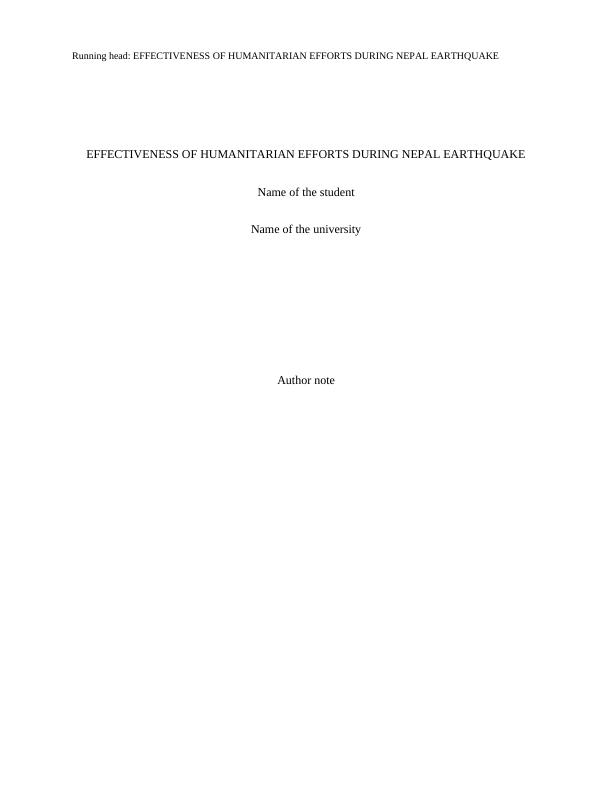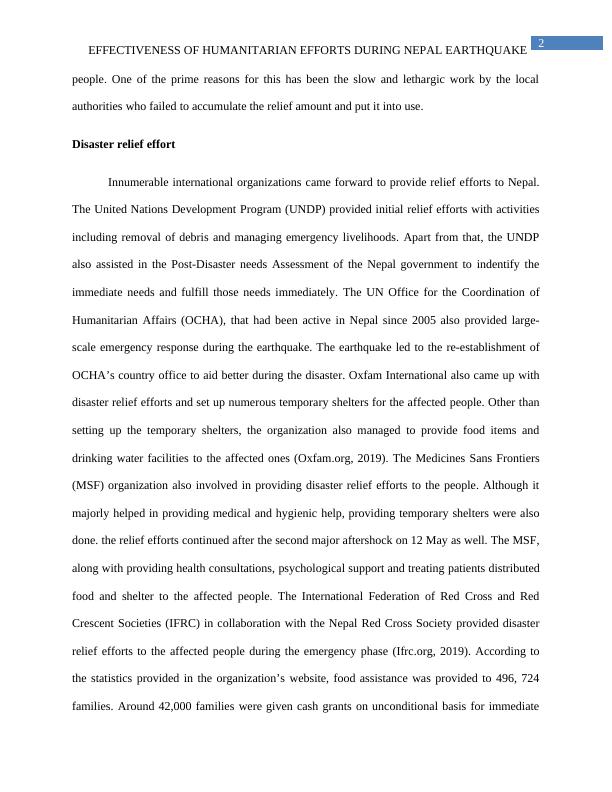Effectiveness of Humanitarian Efforts During Nepal Earthquake
Conduct a prep (‘scoping’) exercise for Assess 2 by selecting an international disaster response since 1990 and reviewing its effectiveness.
10 Pages2675 Words81 Views
Added on 2023-01-16
About This Document
This article discusses the effectiveness of humanitarian efforts during the Nepal earthquake and the challenges faced in providing relief. It explores the contributions of international organizations and agencies in the recovery process.
Effectiveness of Humanitarian Efforts During Nepal Earthquake
Conduct a prep (‘scoping’) exercise for Assess 2 by selecting an international disaster response since 1990 and reviewing its effectiveness.
Added on 2023-01-16
ShareRelated Documents
End of preview
Want to access all the pages? Upload your documents or become a member.
Humanitarian and Development Intervention Case Study 2022
|16
|3936
|18
The Earthquake and Tsunami in Japan in 2011
|4
|1097
|39
Nepal Earthquake: Results, Aspects, and Actions
|7
|1564
|428
2010 Haiti Earthquake Effect
|9
|2242
|53
Impacts of Disasters and Way to Tackle
|8
|2039
|15



